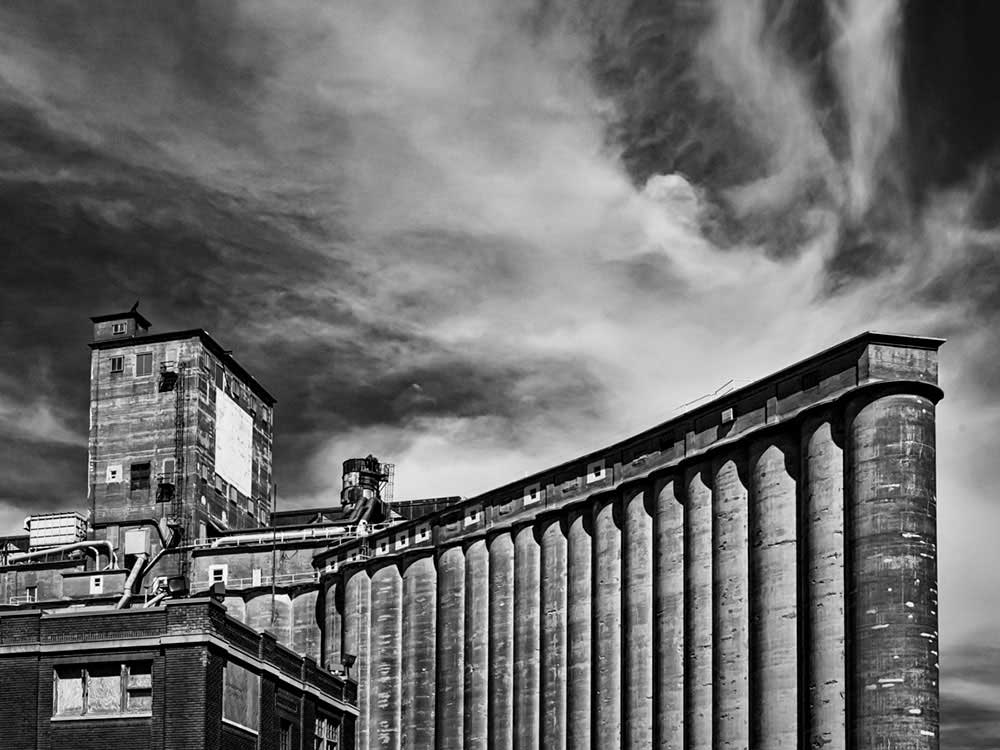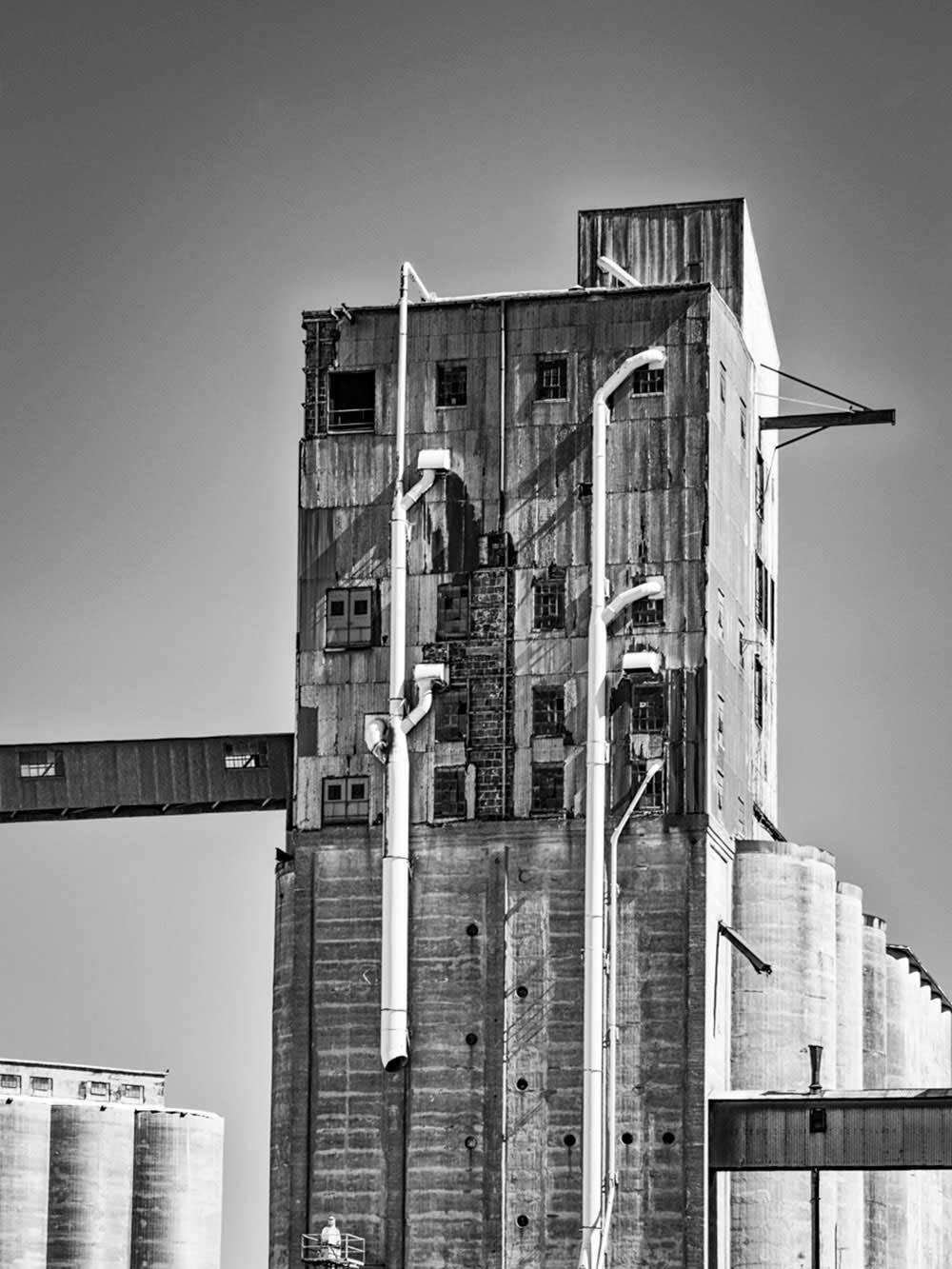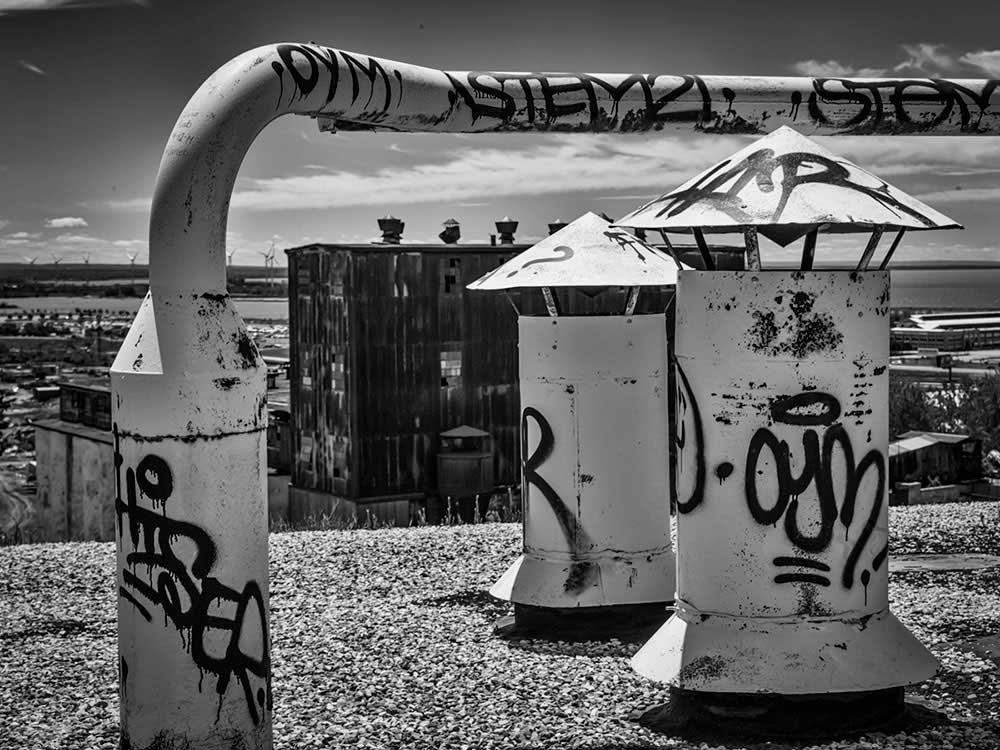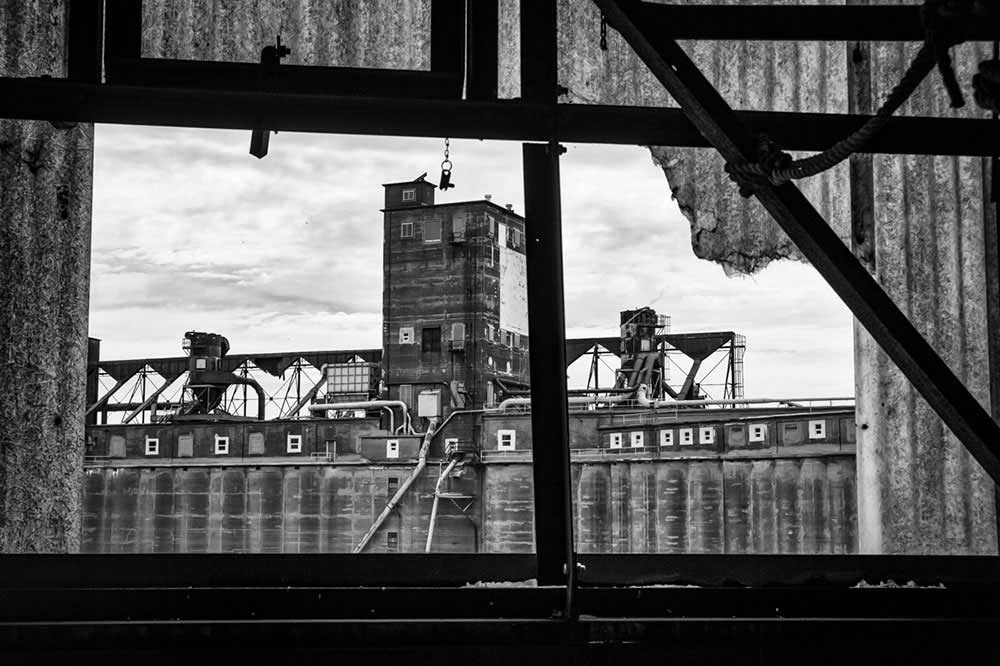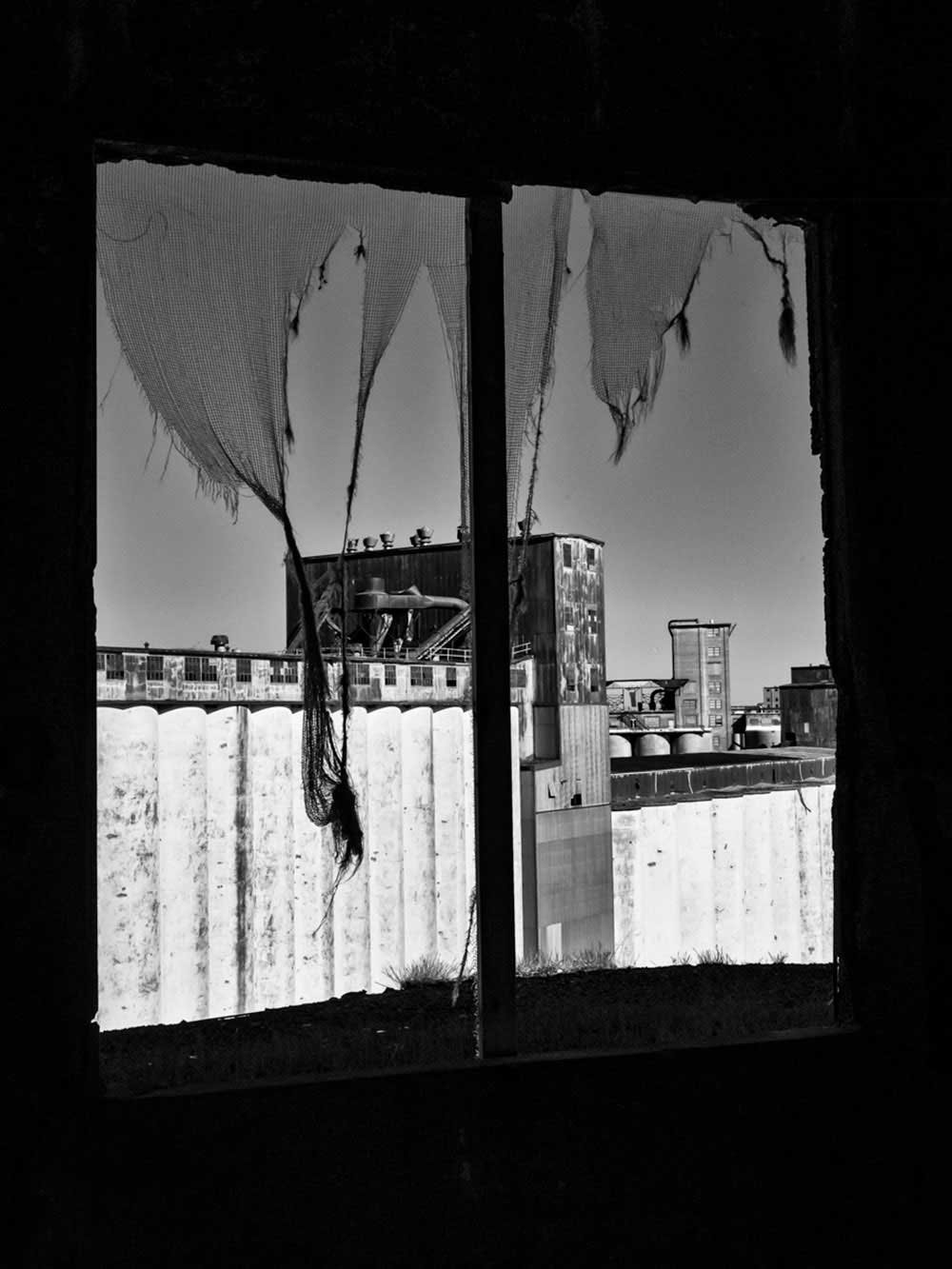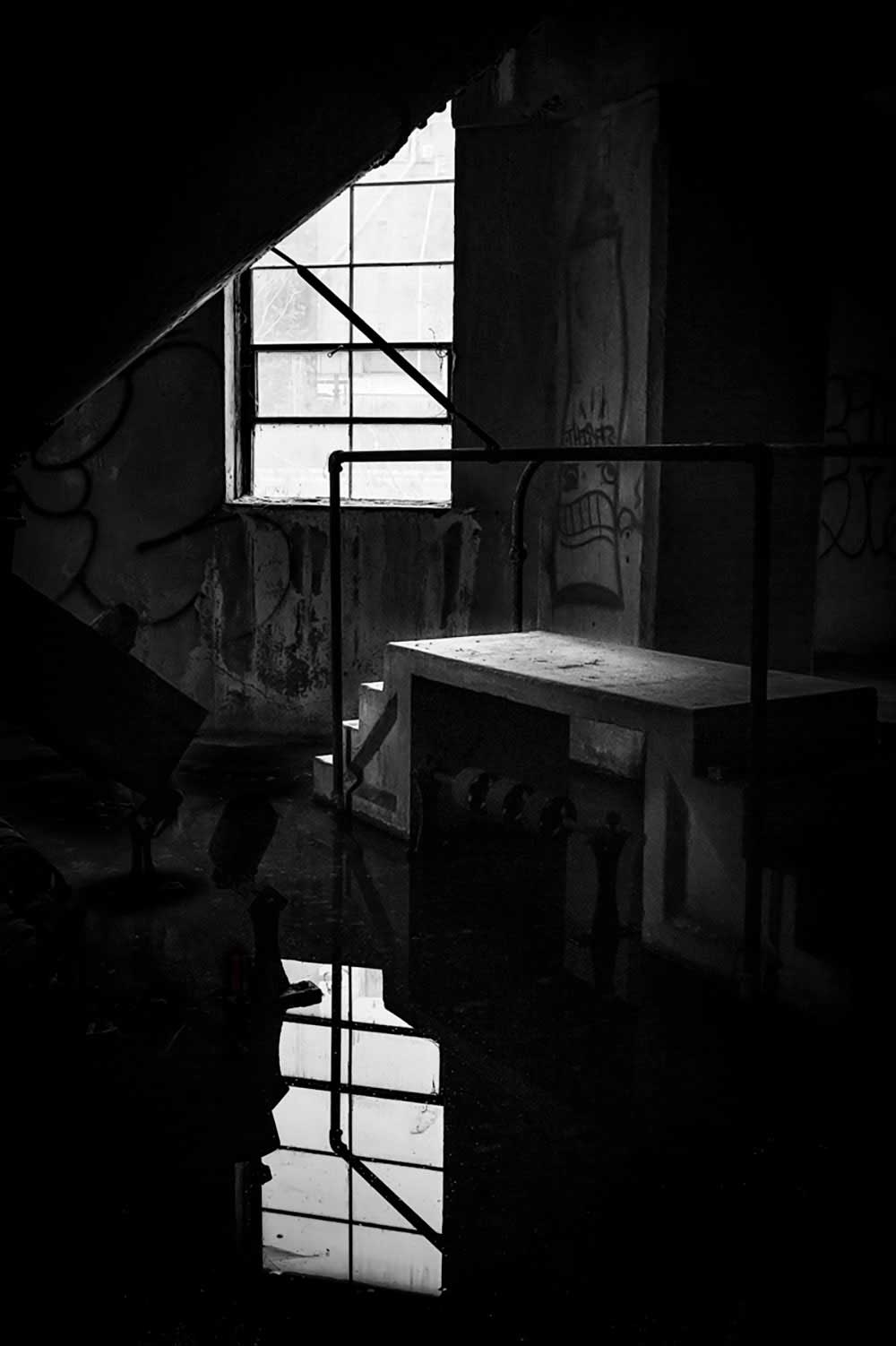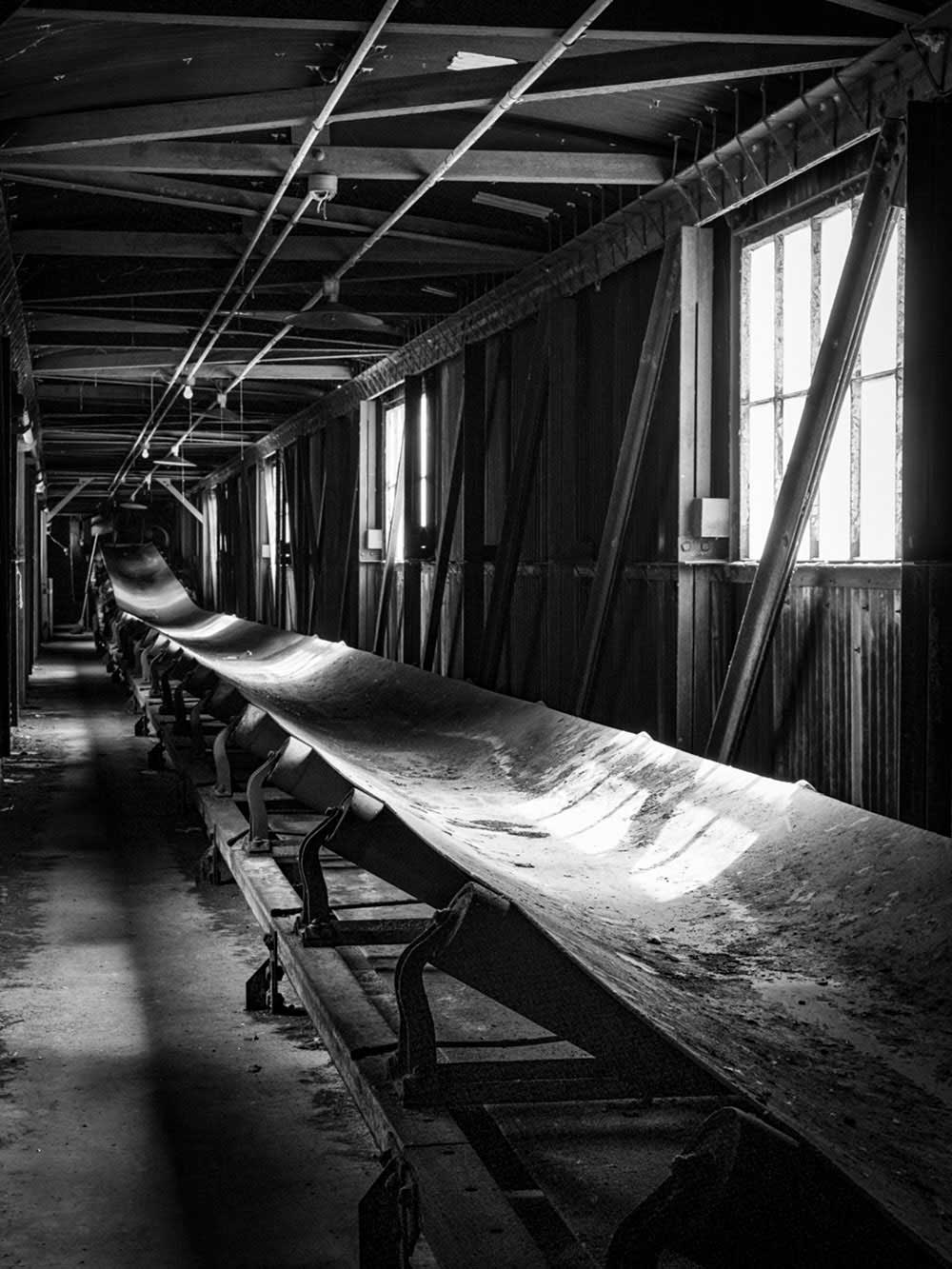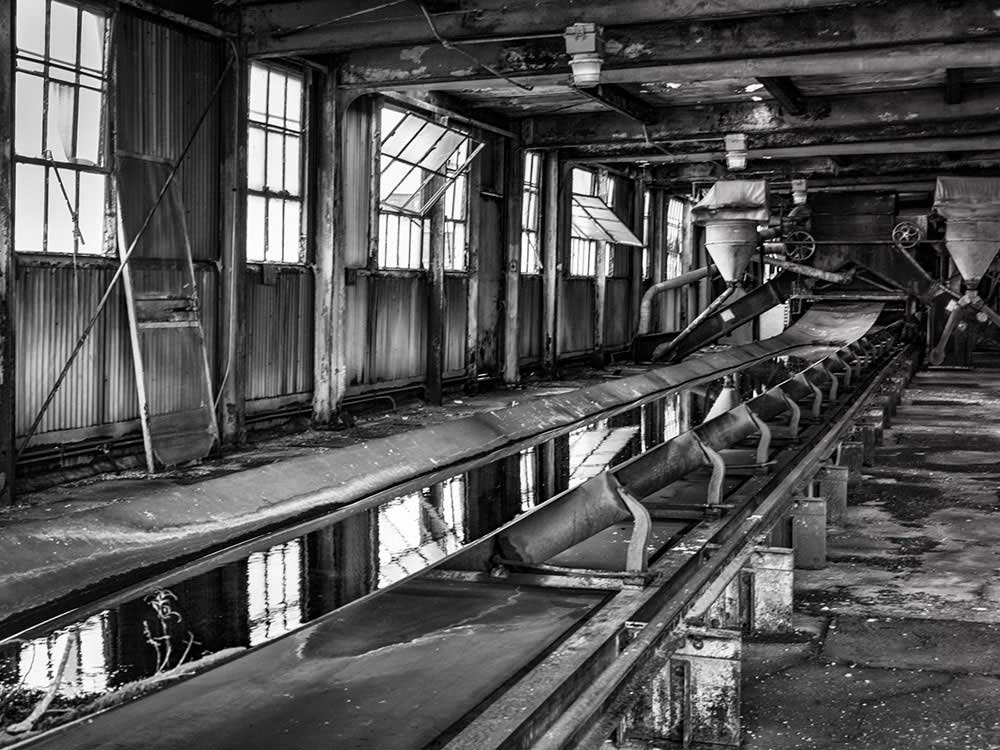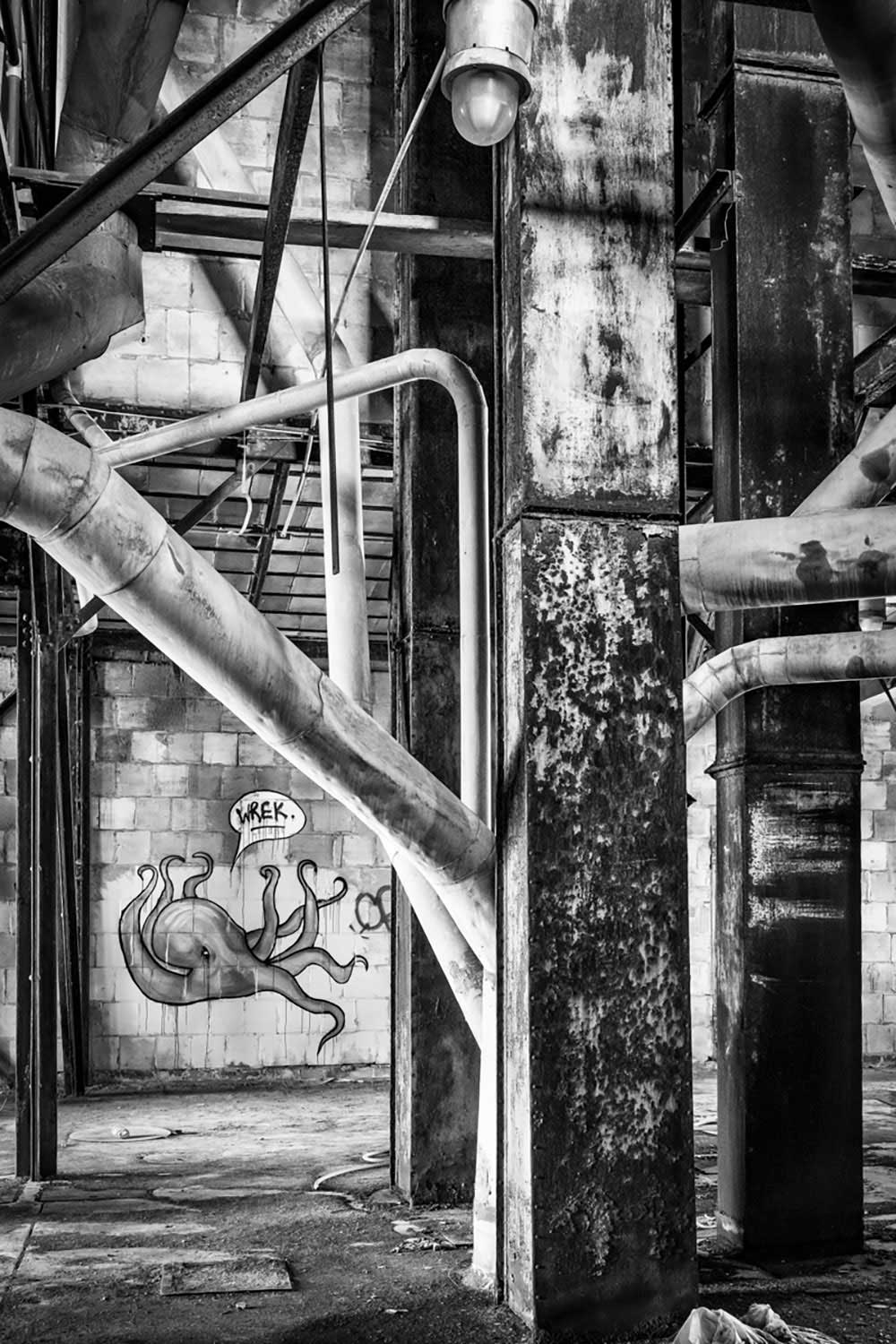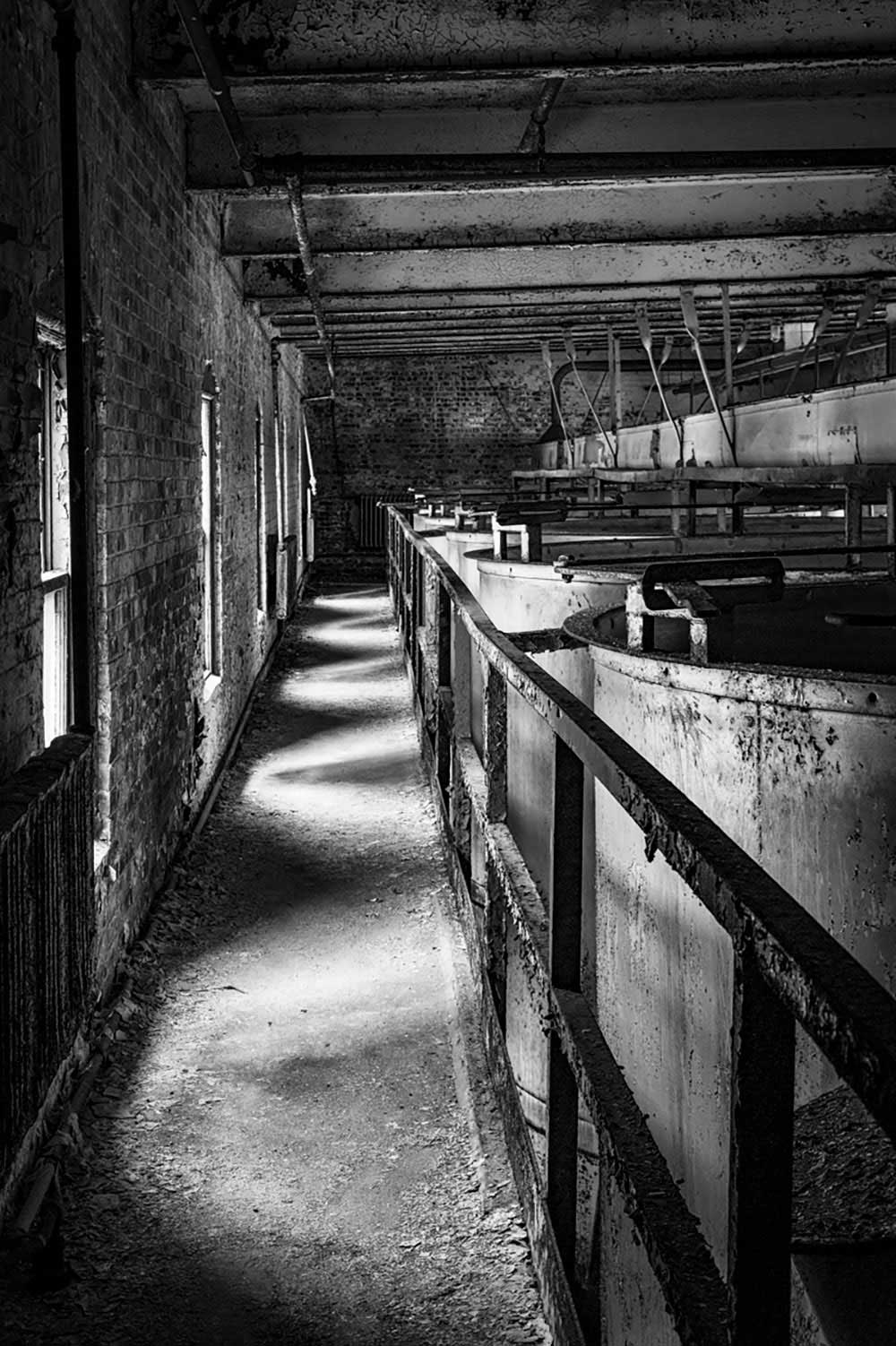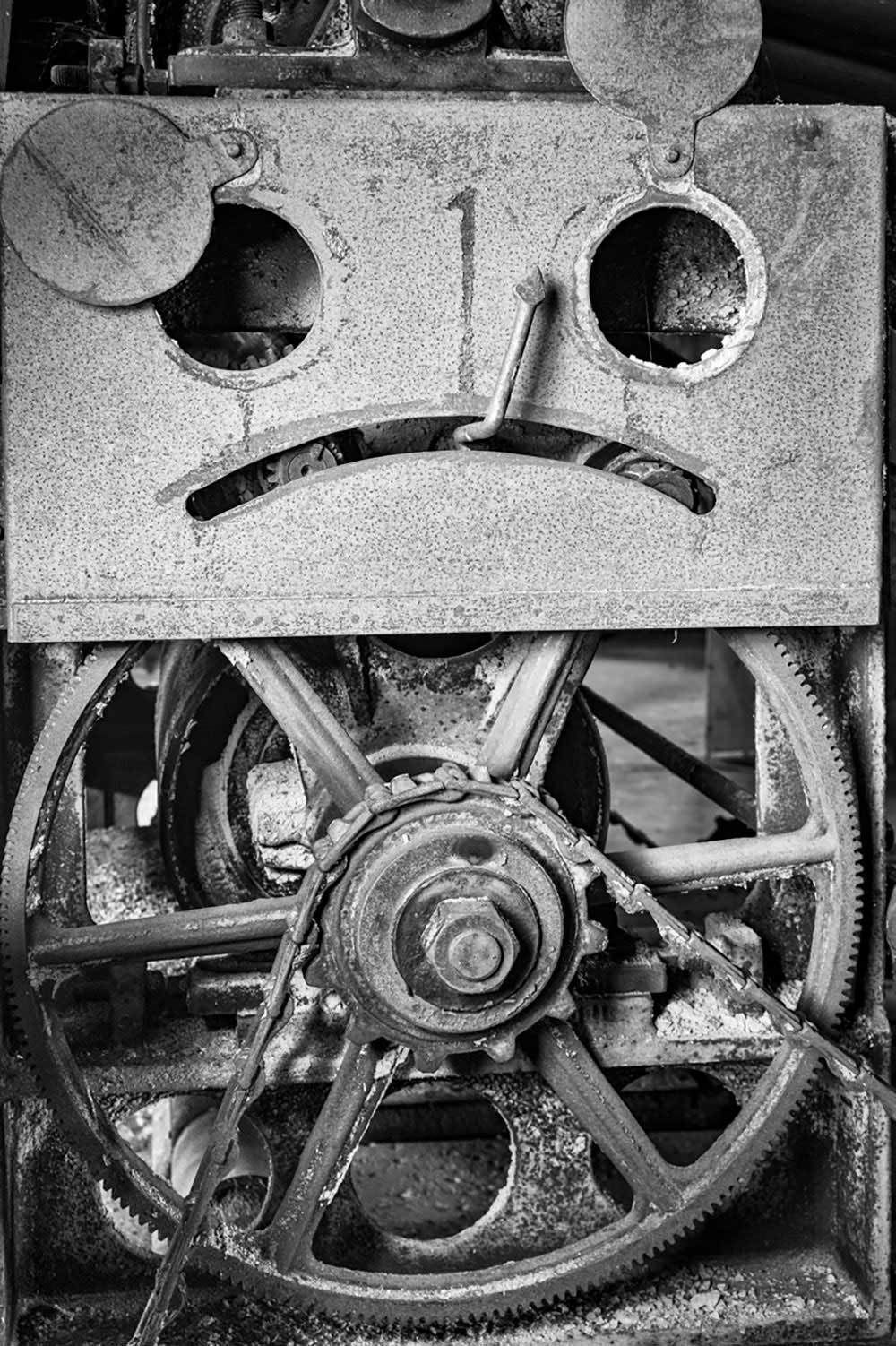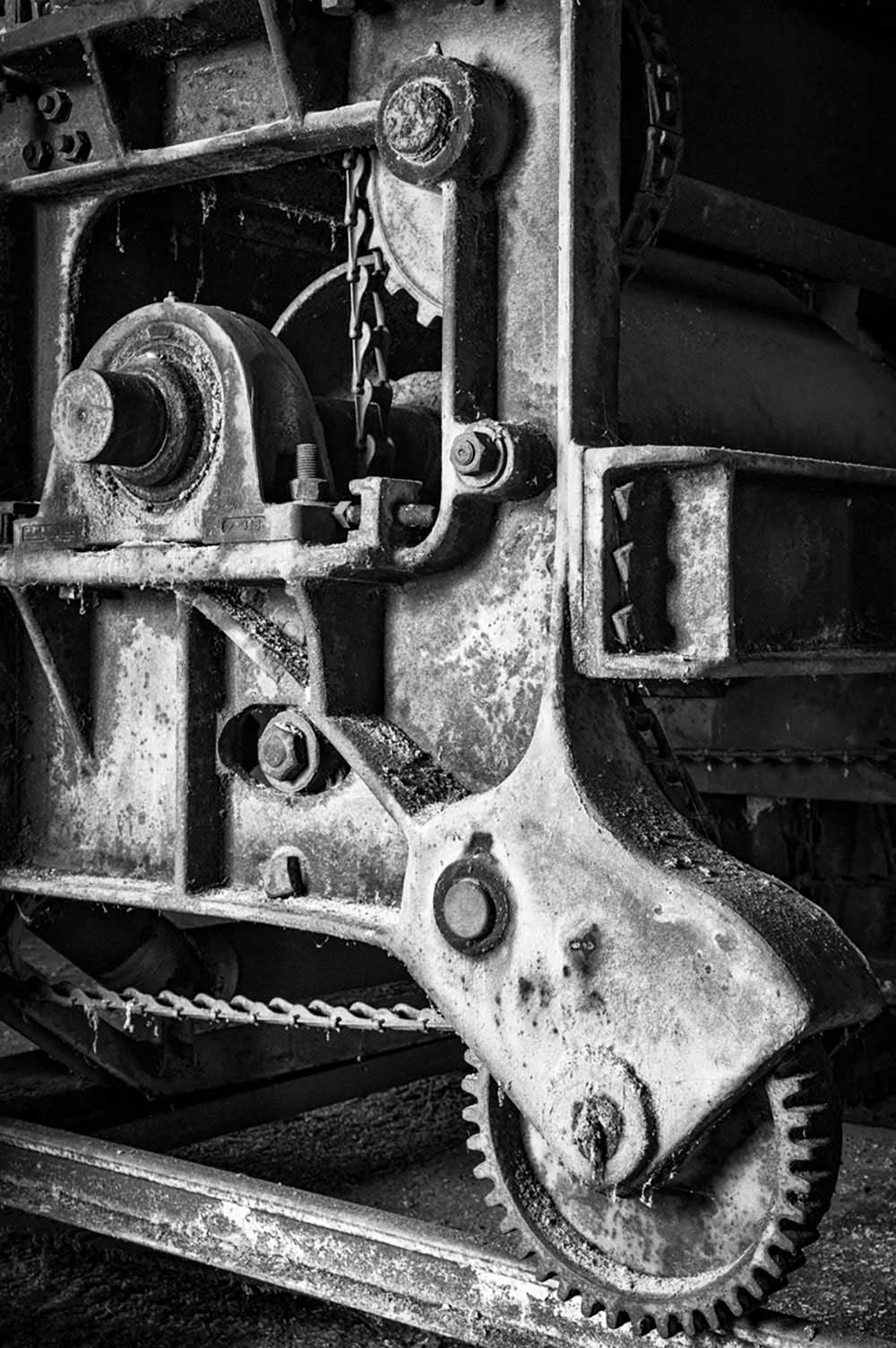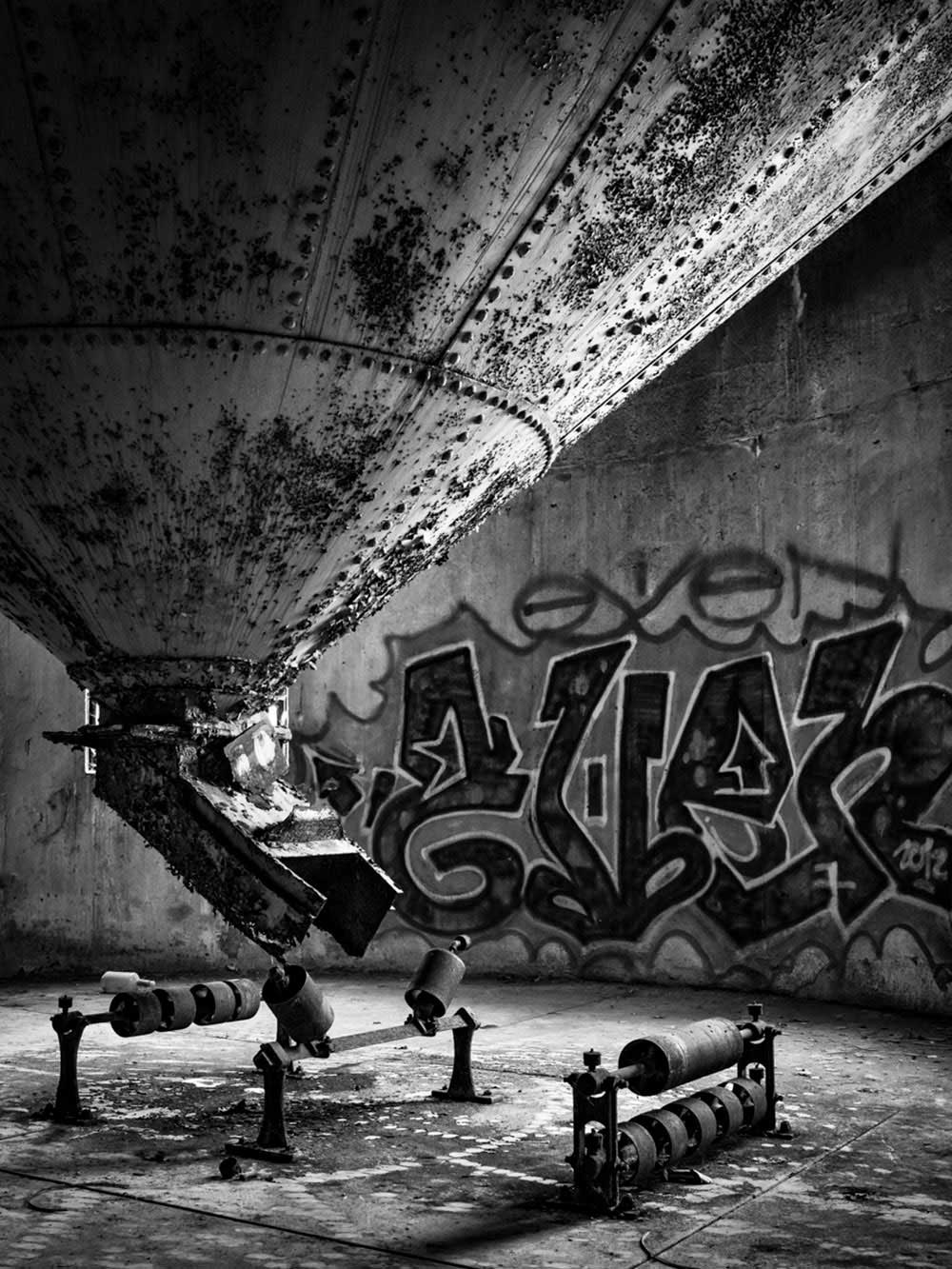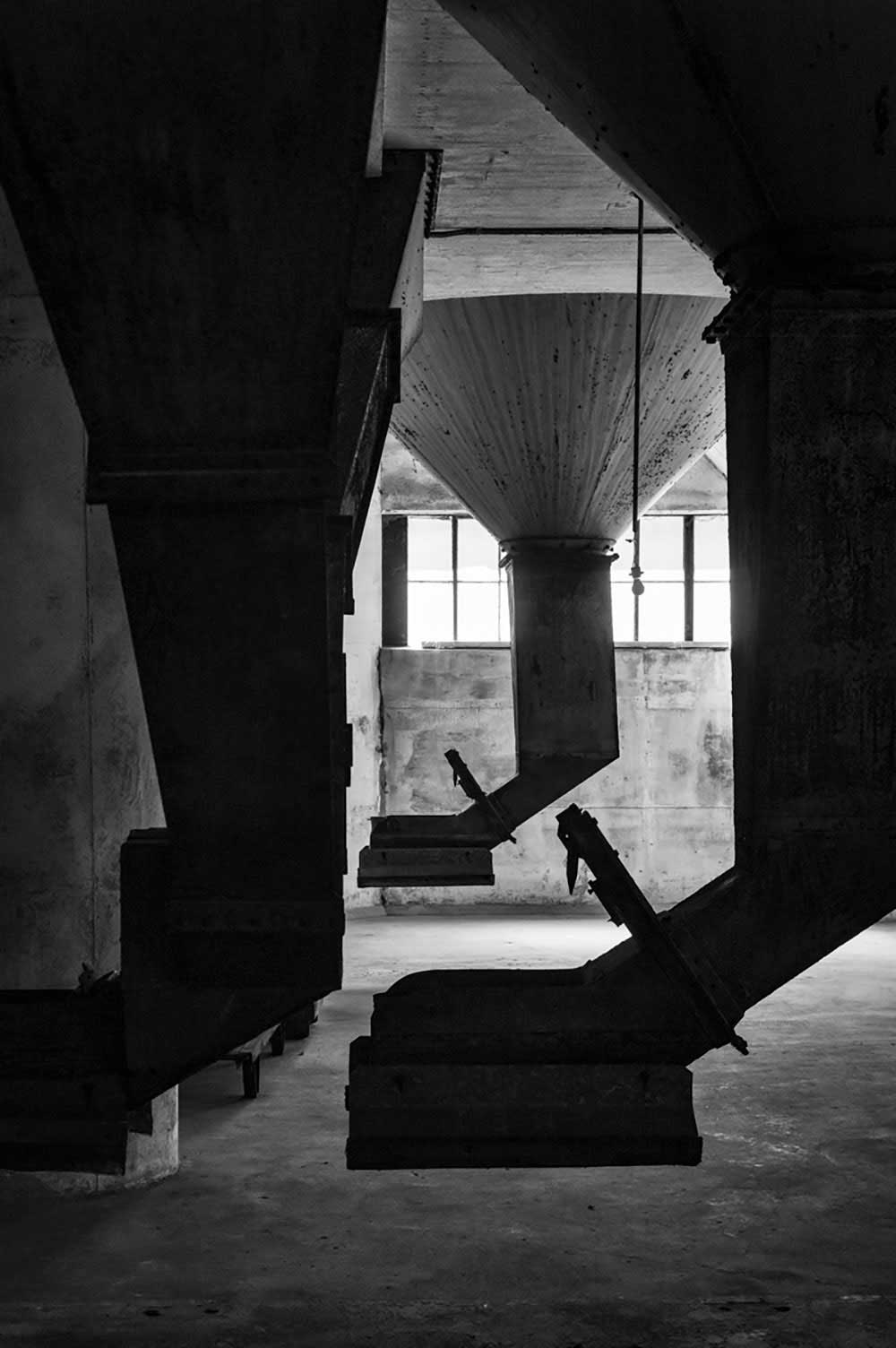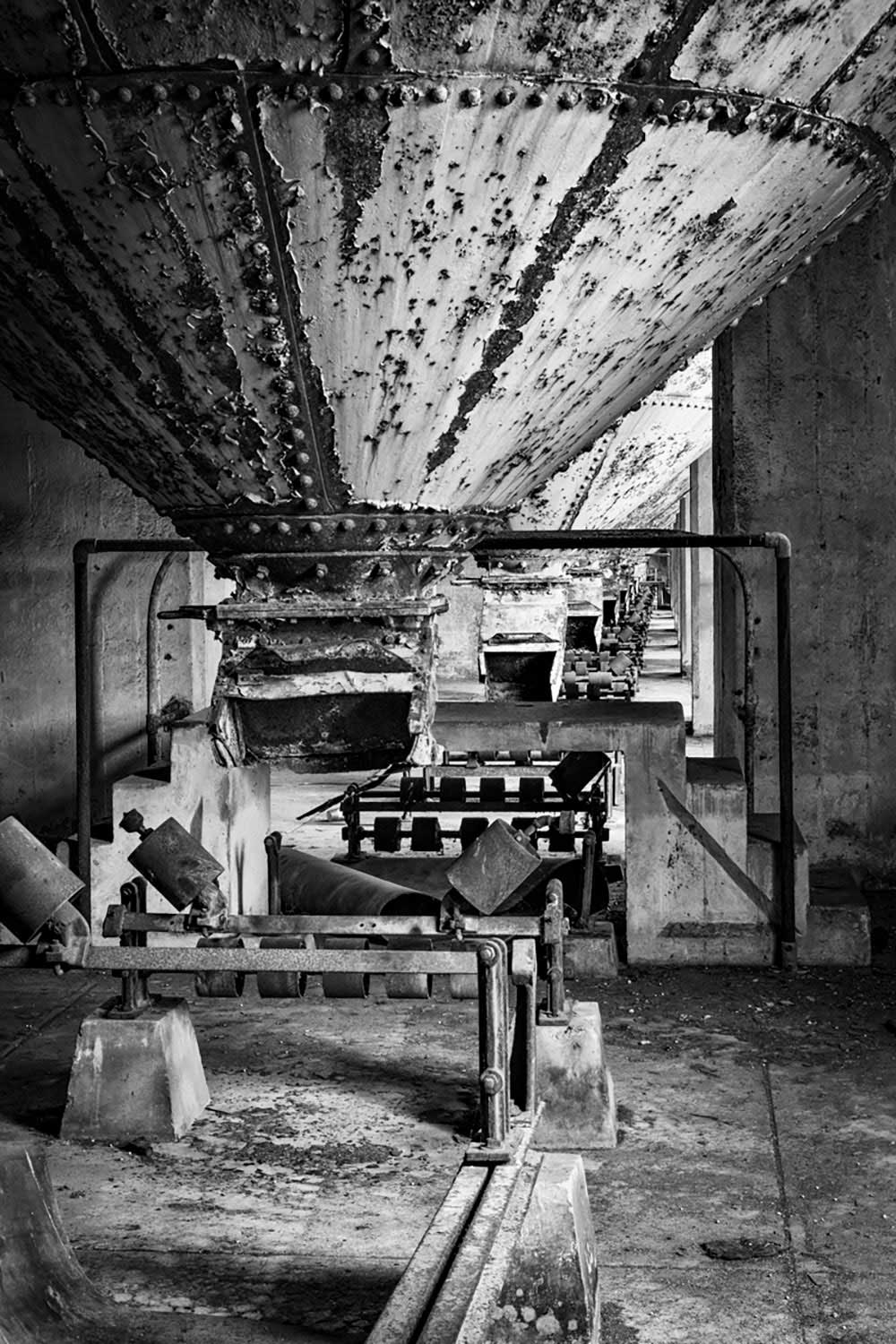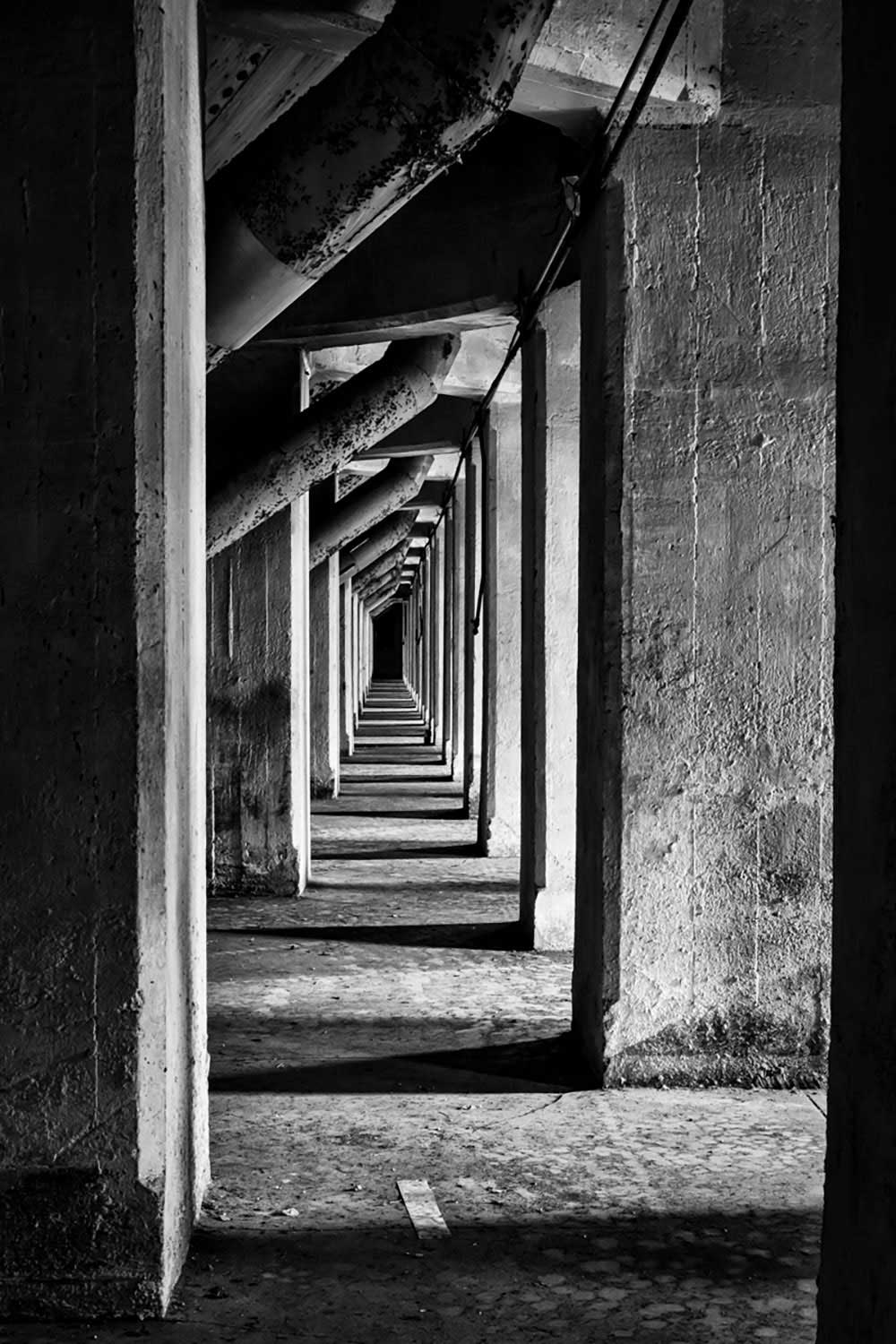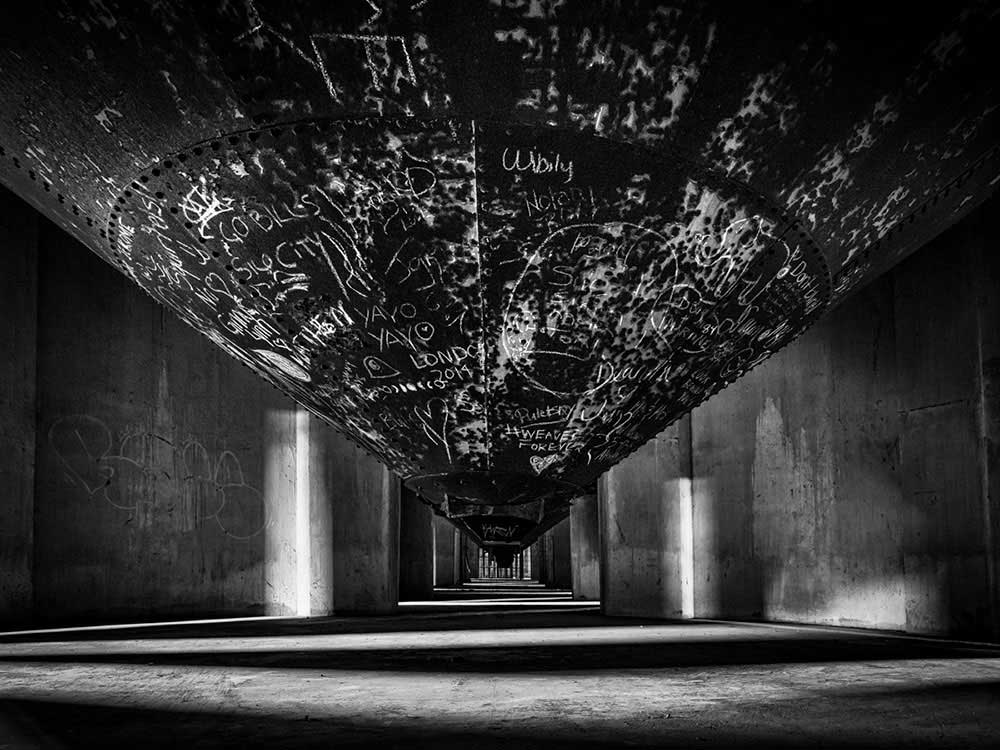The skyline of Buffalo, NY, is dominated by rows of 125 feet tall grain silos and elevators along the Buffalo River.
Built over 100 years ago using the then newly-invented reinforced concrete (think missile silos, only above ground!), the silos immediately attracted the attention of the leading European architects of the time, featuring in the writings and photographs of Gropius, Le Corbusier, and others. However, in 1960’s and 1970’s they were gradually abandoned and left to decay. On visiting them in 1986, the British architect, Rayner Banham, wrote: “.. in abandonment and death they evoke the majesties of a departed civilization”.
This portfolio documents these majesties: from the austere silhouettes against the skyline, to the dark maze and chaos of derelict machinery on top of the silos and the bin-bottoms in subterranean basements under them. Captured using minimal equipment in the available light, for me black and white images provide the best emotional and visual representation of this departed civilization.
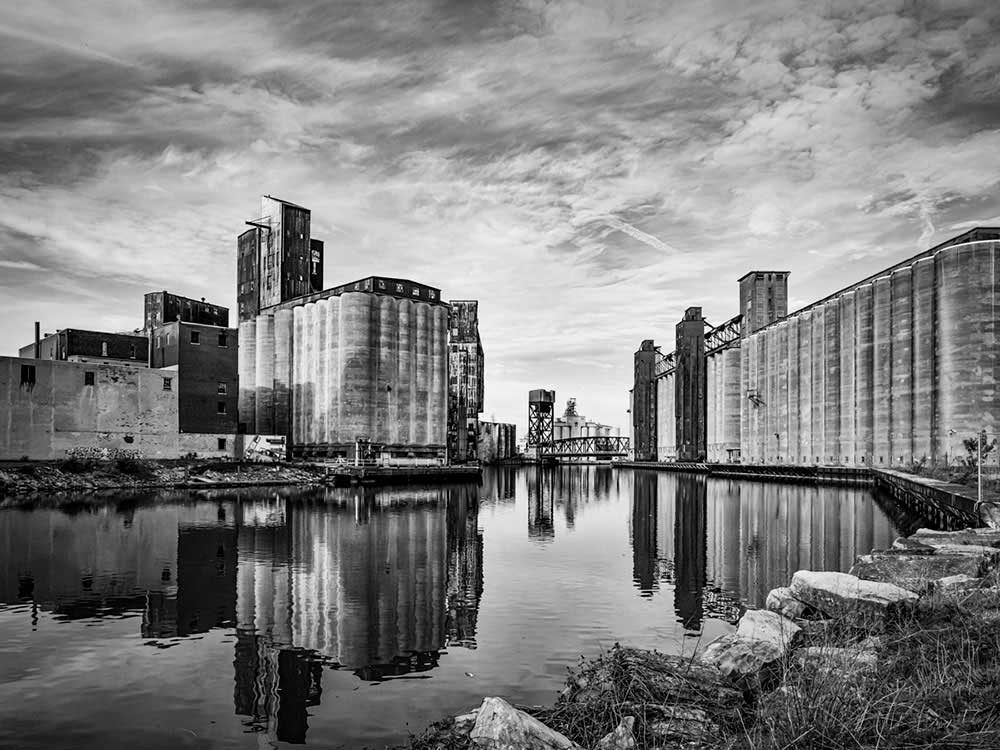
About John Eaton
Born and raised in England, but living in California since the late 1980’s, my photographic skills are self-taught through decades of patience and practice. The potential of black and white photography first enthralled and excited me as a teenager when my father lent me his Kodak fold-out camera to take on a school trip to Brussels and Paris . I bought my first camera in 1966 (a used twin-lens Yashica), followed by a succession of various 35mm and medium-format film cameras — today I use digital medium-format and rangefinder cameras.
I’m energized in exploring images of what I see around me, especially architecture and landscape (the interest in architecture comes from the rest of my family — my father, brother and son are all architects). I’m fascinated by the form and function of buildings that men and women create and equally by the infinite forms that nature can create.
In these fields my interests are wide — from the awe of medieval English cathedrals, the industrial heritage of Buffalo, the simplicity of California’s missions, the variety of monuments in Washington DC, the baroque churches of Bavaria and the Tyrol, and the very different architecture of cities such as Beijing, Venice, Dubai, Chicago, Buffalo, Oxford and Cambridge. My special passion is to document and explore the interiors of all of the great English medieval cathedrals, those built between the arrival of the Normans in 1066 and the Reformation and Dissolution by Henry VIII in 1539-41, featured on my other site: English Medieval Cathedrals . More recently I’ve been engaged in documenting some of the key industrial and architectural elements of America’s heritage through the history and evolution of the grain elevators and silos in Buffalo from the end of the 19th century through to today.
Similarly in landscapes — from the ever-changing abstracts of sand-dunes, the raw beauty of winter, the infinite variety in the form and structure of trees, the largely man-made landscapes of Blenheim Palace in England and Nymphenburg, Schleissheim, Linderhof and Herrenchiemseee palaces in Bavaria, the shifting patterns of beaches and seascapes, to the beauty and serenity of the English Lake District. In particular, the infinite variety of abstract forms, and the subtle interplay of light and shade created in sand dunes fascinates and excites me photographically.
Ever since that first experience back in 1958, black and white photography has always been my first love — the simplicity, elegance, drama, timeliness and richness that it can bring to an image for me drives a more visceral response. I’m excited by the emotional ‘punch’ that black and white images bring in this particular context – the contrasts between light and dark, areas of luminance and tonality, and the abstractions of lines, shapes and forms — that “special” quality that heightens the emotion and impact of the image. [Official Website]

